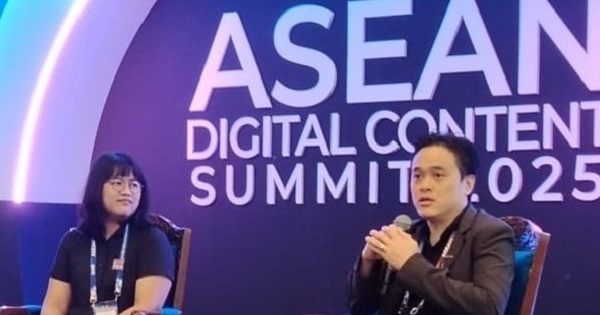Industry at a New Transition Period: ASEAN Must Seize the Moment to Boost Gaming Sector
Despite recent layoffs, Triple-A game flops, and lingering negative perceptions of the gaming industry, sales continue to rise, said Saranpat Sereewiwattana, Vice President of the Thai Game Software Industry Association. He shared these insights during the “Associations Driving Industry Synergy” panel at the ASEAN Digital Content Summit held from September 3-7 in Johor Bahru.
The panel was moderated by Don Baey, Chairperson of the Singapore Games Association, and featured Saranpat alongside Ken Natasha, Operations and Strategic Partnership Manager at Asosiasi Game Indonesia (AGI).
### Collaboration Is Key for Southeast Asia’s Gaming Future
Saranpat emphasized that the next step for Southeast Asia’s game development sector is clear: increased collaboration, especially around talent development. The rise of generative AI is already lowering production costs, enabling ASEAN studios to shift their focus from production-heavy tasks to creative idea generation and game design under human supervision.
“We are now at another transition period in the gaming and animation industry, similar to past transformative moments like the launch of the App Store and platforms such as Unity and Unreal Engine,” said Saranpat. “ASEAN companies need to seize this moment, benefit from the current disruption, and act before a new status quo sets in and opportunities slip away.”
### Indonesia: Large Market with a Growing But Underserved Talent Pool
Ken Natasha highlighted a significant gap in Indonesia between the vast gaming audience and the limited number of industry professionals. “We have almost 300 million people, but only about 3,000 people work in the Indonesian video game industry,” she noted.
Though Indonesia’s gaming sector is estimated to be around 20 years old, real growth started only after 2016. While the number of new studios was just two to five annually in the early years, recent figures show between 10 and 20 new gaming studios emerging each year.
One challenge is the absence of major gaming companies setting up offices in Jakarta, which means local talent hasn’t had many opportunities to learn from best practices or gain direct experience. “Everyone had to self-learn,” Ken said.
### Funding Remains a Major Challenge
Funding is another critical barrier for Indonesian developers. While the Ministry of Creative Economy offers some support, it’s often insufficient even for prototype development.
On regional collaboration, Ken expressed hope to see more initiatives supporting small studios across ASEAN, especially to fund prototype creation and market testing. “I think that would be awesome,” she said.
### Building an ASEAN-Wide Collaborative Ecosystem
Saranpat agreed wholeheartedly. “We should come together and think about ASEAN as one group of people. Different countries have supported games at different times and in various ways, but learning from one another should be the starting point.”
Rather than working in silos, ASEAN nations need to collaborate on talent development and help young people anticipate and understand industry changes. One pressing issue is that many industry training curriculums lag behind market needs. Students often graduate into a world vastly different from what they studied.
“To bridge that gap, we can connect students with relevant industry professionals and encourage learning from each other,” said Saranpat. He pointed to Thailand’s national gaming and animation pipeline program, which has run for the past four years. Here, students submit projects, compete nationally including at events like Gamescom Asia, and network with peers and industry experts from across ASEAN.
### Attracting and Retaining Talent: A Core Challenge
Ken highlighted another hurdle: attracting young talent to the gaming industry. “The video game industry isn’t perceived as sexy as IT. We need to make young people feel comfortable with the industry first.”
Since mainstream education rarely covers how the gaming industry works, aspiring developers often learn through game gyms, gaining practical experience outside the classroom. Successful participants can form studios and join events like the Indonesia Game Developers eXchange (IGDX), an annual event hosted by Indonesia’s Ministry of Communication and Digital.
### Navigating Uncertainty with Adaptability
With ongoing speculation about AI’s impact, funding gaps, and talent shortages, Ken admitted, “I have no idea how all this uncertainty will turn out. But this is happening now, and the most important thing is finding ways to stay on top.”
Clearly, ASEAN’s gaming and animation associations have a key role in helping the ecosystem adapt and thrive in this period of disruption. The question remains: who will step up to lead the way?
https://www.digitalnewsasia.com/digital-economy/asean-digital-content-summit-2025-regions-games-industry-needs-fewer-silos-more



